Looking for information about crawl space vent covers? If so, you’ve landed on the right page because that’s what we’re going to cover in this article. We’ll review what crawl space vents are, why you should never leave crawl space vent covers open, why you’ll need to do more than simply close them, and more.
What Are Crawl Space Vents?
Crawl space vents are small openings designed to allow outside air to flow in and circulate through the crawl space. The original idea was that allowing fresh air to flow into the crawl space would prevent moisture buildup and mold growth, which can harm the home’s structure and occupants.
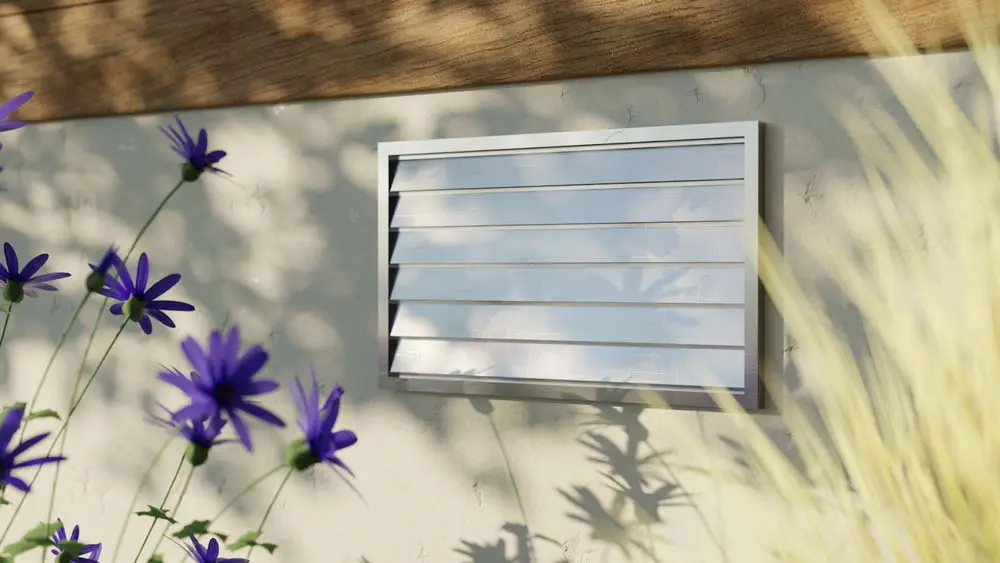
Things didn’t exactly turn out as expected, and today, the consensus is that crawl space vent covers should be closed. However, this isn’t enough to help prevent moisture from building up inside the crawl space. We’re going to talk about why this is in just a bit.
Why You Don’t Want Open Vents in the Crawl Space
It turned out that open crawl space vents allow warm, humid air to flow in during the summer and condense on cooler surfaces, creating moisture in the area and leading to mold growth and other moisture-related problems. Open crawl space vents during the winter allow frost to form inside the area, creating moisture. Cold air rushing into a crawl space during the winter isn’t good for your pipes, either. It also creates a cold floor above the crawl space.
Even when moisture isn’t a significant issue, open vents can still allow rodents and other pests easy access to your crawl space. This can result in various problems, from nests and droppings to structural damage caused by these unwanted guests gnawing on wood.
What Are Crawl Space Vent Covers?
Crawl space vent covers are just as they sound: barriers fitted over your vented crawl space’s openings. Crawl space vent covers are designed to protect your crawl space from the invasion of unwanted crawlies, dampness, rot, and mold— something that can not only lead to the degradation of the wooden structures in the crawl space but can negatively affect the air quality in your home’s living area.
Crawl space vent covers come in various colors, styles, and sizes, so you can choose a style that perfectly blends with your home’s exterior to enhance the aesthetic appeal of your property.
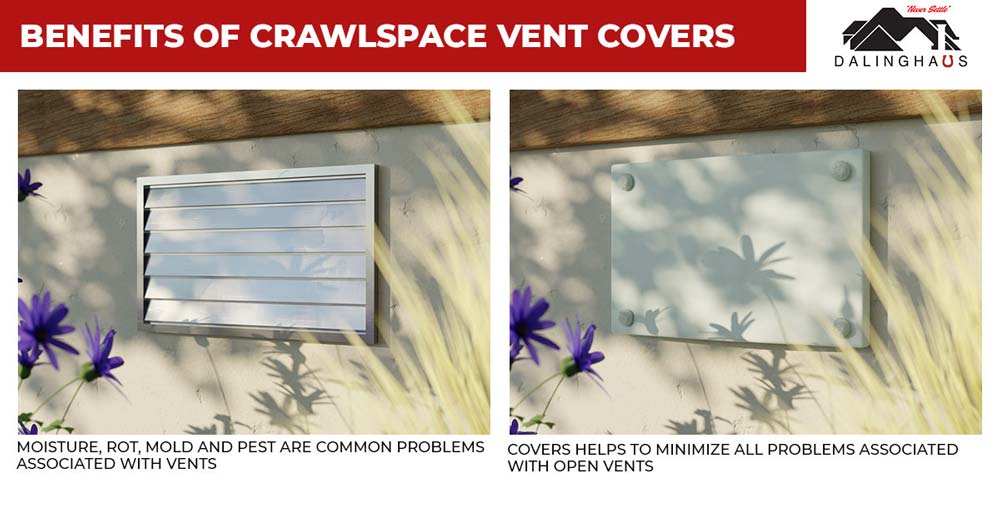
Why Closing Crawl Space Vent Covers Only Isn’t Enough
Closing crawl space vent covers may seem like a logical solution for preventing moisture and pests from entering your home. However, just covering the vents isn’t enough to protect your crawl space from moisture. In addition to closing crawl space vent covers, homeowners should take other necessary steps to ensure their crawl space remains dry and free from moisture-related problems. These include the following:
- Clean your gutters regularly – Clogged or poorly maintained gutters can cause water to overflow and accumulate in the ground around the foundation and, from there, make its way into the crawl space. Therefore, it’s essential to ensure gutters are cleared of debris, leaves, and other obstructions to allow water to flow freely away from the home.
- Use downspout extensions – Downspouts that discharge water too close to the house can cause water to pool in the ground around the foundation, leading to moisture accumulation in the crawl space. Installing downspout extensions helps to direct water safely away from the foundation.
- Regrade the yard around the foundation – Poor grading can cause water to flow towards the foundation, increasing the risk of moisture accumulation in the crawl space. Therefore, ensuring the yard slopes gently away from the foundation is critical.
- Keep water-hungry vegetation away from the foundation – Trees and plants that need a lot of water can cause soil saturation, leading to moisture accumulation in the crawl space. Ensure vegetation is planted at a safe distance from the foundation or that their water needs are adequately managed and controlled.
- Install a drain tile system – Installing a drain tile system is also crucial in preventing moisture from penetrating the crawl space. Drain tile systems help to collect water and direct it away from the foundation, reducing the risk of moisture accumulation and water damage in the crawl space.
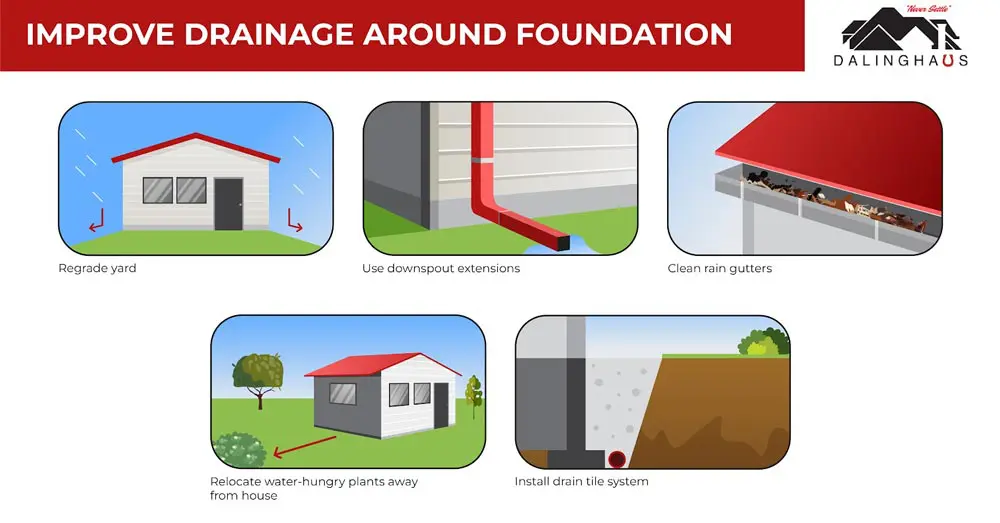
For more information, see What Homeowners Need To Know About Landscaping Next To Their Home’s Foundation.
Signs There’s Moisture in Your Crawl Space
Signs there’s excess moisture in your home’s crawl space include the following:
- Visible mold on crawl space structures – These unsightly and potentially harmful substances thrive in damp environments and can spread rapidly if left untreated.
- A musty odor in your home’s living area – A percentage of the air in the crawl space flows into your home. If the crawl space is moldy, the air in your home will also be. This odor can permeate throughout your home.
- Pest infestation – Moisture in your crawl space can attract pests such as termites and rodents, further damaging your home and creating health hazards for you and your family.
- Bouncy or uneven floors – This may be a sign moisture has damaged the wooden support structures in the crawl space.
- High humidity and condensation in your home’s living area – This could indicate excess moisture in the crawl space.
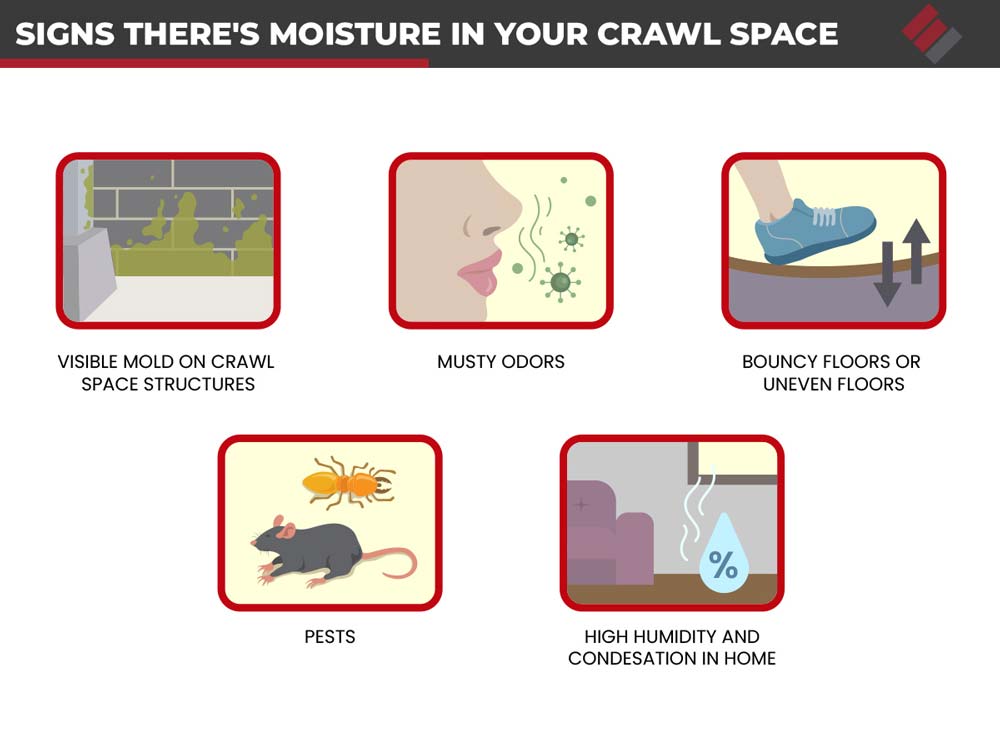
If you’re concerned about your home’s crawl space, contact us today to schedule a crawl space evaluation. We serve Southern California, Arizona, and Nevada.






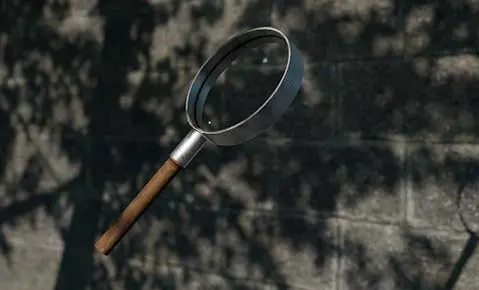
One Response
I am impressed by your website. Great job. I’m sure we’ll be speaking soon on some of my properties.